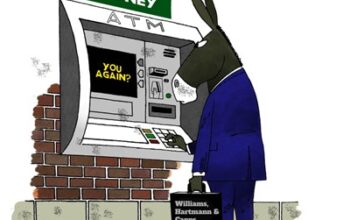Would you want to live in a place, like Cuba, China or California where electricity is not stable and blackouts and brownouts are normal? How do you keep the doors open, the refrigerators and machines going if you are never sure that you will have energy to do it?
“PG&E’s alert says:
“A Public Safety Power Shutoff (PSPS) occurs in response to severe weather to help prevent a wildfire. A severe weather system is moving through parts of PG&E’s service territory. Outages and outage risk will continue until the severe weather has passed. Once weather conditions improve, crews will begin inspecting and making repairs where needed. Power will be restored as soon as it is safe to do so. We attempt to notify affected customers by phone, text and email.”
A friend who lives in tree-lined East Sacramento in downtown said his power was off all day Monday, from 9:30 AM until 7:30 PM. I live in another downtown Sacramento neighborhood with massive trees, but our power remained on all day.
Lack of hydro-electric dams, no coal or nuclear, fossil fuel is being ended—you have to count on the wind for energy. But, if you have too much wind, the power gets shut off! We are a Third World State.
California’s ‘New Normal:’ PG&E Power Shut Offs on Windy Days

How is this going to work as Gov. Newsom pushes California to an all-electricity grid?
By Katy Grimes, California Globe, 10/13/21
Thousands of Californians were without power Monday due to high winds, according to a PG&E alert.
PG&E’s alert says:
“A Public Safety Power Shutoff (PSPS) occurs in response to severe weather to help prevent a wildfire. A severe weather system is moving through parts of PG&E’s service territory. Outages and outage risk will continue until the severe weather has passed. Once weather conditions improve, crews will begin inspecting and making repairs where needed. Power will be restored as soon as it is safe to do so. We attempt to notify affected customers by phone, text and email.”
A friend who lives in tree-lined East Sacramento in downtown said his power was off all day Monday, from 9:30 AM until 7:30 PM. I live in another downtown Sacramento neighborhood with massive trees, but our power remained on all day.
This is the new normal for Northern California residents every time the wind blows, because PG&E is concerned their power lines could topple over and cause fires, as has happened annually in rural areas.
Apparently it is more effective in California to shut ratepayers’ electricity off than to practice proper forest management.
How is this going to work as Gov. Newsom pushes California to an all-electricity grid? Frequent power shut offs while moving to an all-electric state goes against the tide of facts.
Newsom just signed bills banning gas powered generators, lawn mowers and leaf blowers – wholly ironic about the generators, as the power was cut to many Californians’ homes Monday – again.
Newsom has also pushed all-electric new construction. And PG&E has embraced this, despite providing gas to 40 percent of the gas customers in California.
“Rather than continuing to expand a fossil fuel infrastructure network that is not aligned with California’s climate and air quality goals, the state should require all-electric new construction,” Greenbiz opined, pushing all-electric new construction. But there was no acknowledgment in the article of PG&E’s frequent power shut offs and how this will impact an all-electric California.
Pacific Gas & Electric (PG&E) officially exited bankruptcy in July 2020 after paying billions in claims and settlements, and accepting responsibility in dozens of wildfire deaths.
As the Globe recently reported, “California currently buys 20% to 30% of its daily supplemental energy from other states. We do not produce enough of our own energy to support the state’s needs. And with the overwhelming push by the left to rid the state of natural gas production, oil, nuclear and hydro power, intermittent renewable energy cannot provide steady, reliable power for the state’s nearly 40 million residents.”
Cities are banning the use of natural gas and imposing all-electric appliance requirements in new and existing homes. The California Energy Commission rolled out new building code drafts in May, proposing building standards to require new homes have all-electric appliances instead of natural gas appliances. And Gov. Gavin Newsom issued an executive order in September 2020 requiring sales of all new passenger vehicles to be zero-emission by 2035.
These policies, and not “extreme weather,” are leading to rolling blackouts.
The Globe recently covered how Gov. Gavin Newsom misled the public about his wildfire prevention efforts by 690%, and asked, “who is to blame for the worst fire season on record. Is it the governor? Is it CalFire? Is it agencies directly commanded by Gov. Newsom?”
As the Globe reported, CalFire Chief Thom Porter admitted “We didn’t have all of the environmental clearance that we were going to need to do all of that work. Nor did we have all of the agreements with landowners completely in place,” Chief Porter said, referring to California’s wildfire prevention efforts and forest cleanup plans, and Gov. Newsom’s claim that the state had in fact cleared 90,000 acres of forest.
The CalFire Chief took the blame for misleading the governor: “He acknowledged the figures cited by Newsom were incorrect and took responsibility for the governor’s misstatements.”
Despite Newsom’s bold public pronouncements the Cal Fire chief said the state was never going to be able to tackle all 90,000 acres in 2019.
And that is the crux of the issue: what were and are the environmental clearances needed, and who approves these? Why were they not granted knowing California’s recent and very deadly wildfire history? California’s worst fire season on record could have been averted – we knew what would happen and why.
Yet CalFire was and remains immobilized by the environmental clearance needed to do their jobs.
The Globe emailed and called CalFire and the Governor’s Office of Planning and Research (OPR), the agency tasked as the state clearinghouse for review of all CEQA documents, to inquire about the environmental clearances needed to approve wildfire prevention and clean up efforts. We asked if the holdup was the California Environmental Quality Act (CEQA).
Even after several inquiries, the Globe never received a response from either agency.
If Gov. Newsom made wildfire prevention a priority on day-one in office, and many promises since, exempting the forest clean up and wildfire prevention projects from CEQA should have been the priority pre-requisite in order to prevent deadly wildfires – and the frequent power shut offs.



